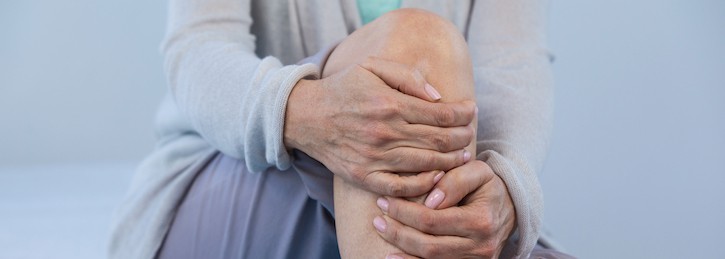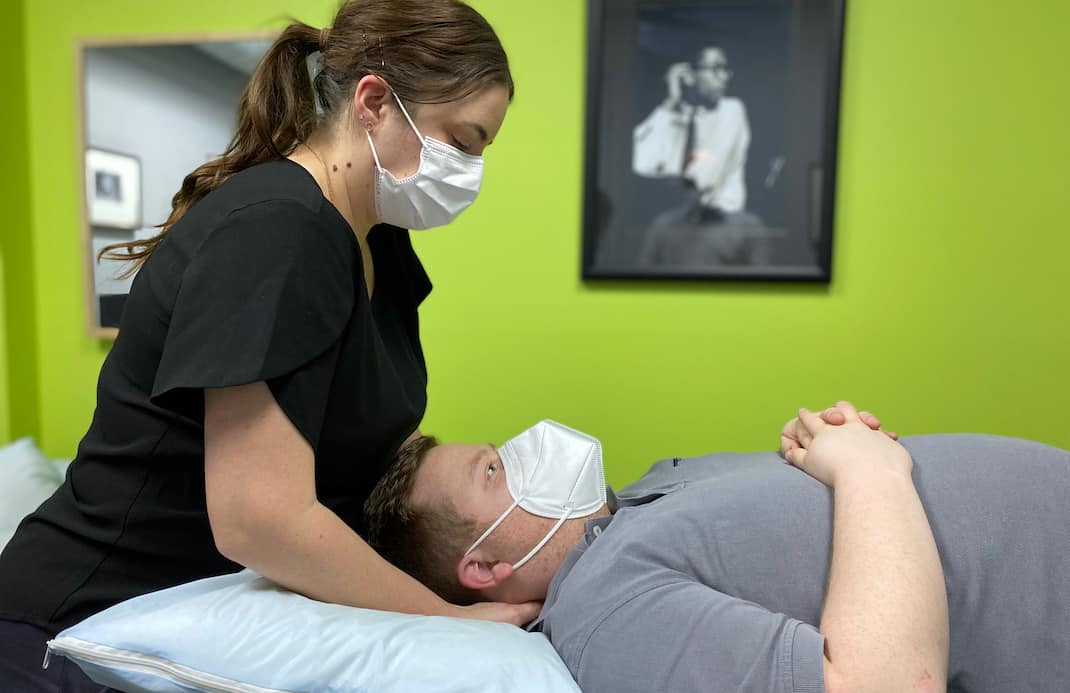Kimberley has written this blog about the link between weight and osteoarthritis (OA). She talks about why improving your diet will help with your pain and your function if you have OA. But I can guarantee it’s not for the reason you are thinking!
The research and medical guidelines are pretty clear. Diet restriction and *exercise are key treatments for osteoarthritis in overweight and obese individuals. These should be the first line of attack with knee and hip osteoarthritis, combined with the right knowledge. A note about the best exercise is at the bottom of the page.
You can read more about proven first line of attack for osteoarthritis topic here.
But just stop for a moment and think about why your diet, weight and osteoarthritis are so linked.
Is it because:
- the more weight you are carrying, the worse it is for your arthritic knee or hip? Yes!
- it means there is more weight going through your arthritic knee or hip? It seems so intuitive, but this may not be the reason.
The ‘Eye Roll Conversation’ about weight and osteoarthritis
Most people instinctively know that weight loss is important if they are overweight. Especially when dealing with an osteoarthritic knee or hip.
In fact, weight loss is an important part of the management of most chronic conditions.

This brings me what I call the ‘eye roll conversation’.
This is the typical scenario.
I’m working with an overweight person who has a painful knee or hip, often from osteoarthritis. We have danced around it enough. And it just can’t be avoided any longer.
It goes something like this – ‘we need to talk about your weight’.
This conversation is often associated with a sigh or at least a deep breath. There is usually a mutual look between client and therapist saying ‘here we go’.
Everyone knows that being overweight isn’t good, but…
The eye roll is because this usually isn’t a new idea to the arthritis sufferer.
Most people know that obesity has a role to play in many health issues. But just knowing that isn’t enough to lose weight.
There is no doubt about it – it’s hard! It is a struggle for the majority, with multiple failed attempts or success followed by reverting back to old habits.
Two nuggets of information you need to know before you read any further
Number one: recently, it has become recognised that systemic (meaning: all over the body) low-grade inflammation plays a part in osteoarthritis (OA).
In people with OA, higher concentration of certain inflammatory markers are linked to more pain (it hurts to do stuff) and worse function (it is harder to do stuff).
Number two: both diet restriction and *exercise have anti-inflammatory effects, and these have been suggested to play a role in helping pain and function in OA.
OK, now you can read on…
Here’s the good news if you struggle with your weight!
If you struggle with both your weight and osteoarthritis of your knee or your hip, this following research article should give you some hope.
An article published in 2019 by Runhaar and co-authors looked at improvements in pain and function in a group of overweight knee OA sufferers after they completed a program comprising exercise and diet restriction.
What made this interesting is that they looked at two specific things. They assessed changes in low grade systemic inflammation markers, as well as changes in Body Mass Index (BMI). Then they worked out how much each factor contributed to the improvements.
The results were very interesting to say the least.
They found that the reduction in systemic inflammation after the diet and exercise programme had a ‘medium’ effect on pain and a ‘strong effect’ on function.
But the change in these inflammatory factors was totally independent of the effect of the change in BMI.
The BMI changes added very little or not at all to the effects on pain and function of the participants.
In other words, the actual weight loss didn’t contribute to their moving better or having less pain!
How can that be?
Osteoarthritis – not just ‘wear and tear’
You would be forgiven for thinking that OA is just ‘wear and tear’. After all, that is how most people refer to it, including surgeons, GPs and the man in the pub.
Instead, osteoarthritis is a chronic disease process which occurs as a result of an imbalance of load over a period of time.
This load isn’t only the physical load, which we tend to automatically think of.
The load is also a systemic load, which means it involves many body systems throughout your body. This systemic inflammation can be affected by many things including, diet, stress, general wellness, sleep and exercise.
These systemic loads have really not been given enough credit in the past. Our new knowledge on OA shows that the systemic inflammation plays a large role in the disease process.
Clearly, nothing is ever simple in the human body! This is what makes us so interesting! It’s also what gives us other ways of approaching a problem like OA, which on the surface seems relatively simple – wear and tear.
We definitely know that modification of diet has a positive effect on pain and function in OA. This has been shown in many high quality studies. We also know that diet can be linked with persistent pain states.
Click here to read my blog on food and pain »»
But we never fully connected diet and systemic inflammation in regards to OA.
The underlying belief in the past was like this:

This Runhaar study shows that this is not the whole story. Instead it looks more like weight and osteoarthritis are linked like this:

The weight of evidence is that the scales aren’t everything
In fact the scales don’t mean as much as we thought when it comes to weight and osteoarthritis!
It means that when you are doing the right things with your diet, your inflammation will decrease whether you see it on the scales or not.
This means eating:
- more green leafy veggies
- less sugar
- less processed foods, and
- maybe even going down the path of eating more anti-inflammatory type foods or fermented foods
- including probiotics in your diet
You can read more about an anti-inflammatory diet here.
Remember, this change in diet works best when combined with the *right kind of exercise.
So perhaps put the scales away. Stop using your weight as your measuring stick. Concentrate on a good diet and the *right exercise, and the weight will probably reduce anyway, but that is just a bonus!
Conclusion – weight and osteoarthritis
- OA is not simply wear and tear
- Changing your diet is definitely important
- Improving diet and combining this with the *right exercise give the best results for pain and function
- The effect of this seems to be more related to the effect on systemic inflammation rather than the weight on joints
- Improve your diet and exercise – you may find that weight reduces as a by-product, but the weight doesn’t have to be your focus
Reference:
Runhaar J, Beavers DP, Miller GD, Nicklas BJ, Loeser RF, Bierma-Zeinstra S, Messier SP. Inflammatory cytokines mediate the effects of diet and exercise on pain and function in knee osteoarthritis independent of BMI. Osteoarthritis and Cartilage 2019; 27: 1118-1123
Other articles that might be of interest:
GLA:D program – What it is all about, and how GLA:D can reduce the pain of osteoarthritis and help get you back into the activities you enjoy.
Joint replacement surgery and the GLA:D program – GLA:D isn’t just for people trying to avoid joint replacement. It is the perfect program to help you get the best out of your new joint.
How to keep your cartilage healthy (even with osteoarthritis) – The new thinking about osteoarthritis means that are things that you can do to lessen the effects of osteoarthritis and actually improve it!
PS – What is the *right exercise?
The right exercise means the right kind of exercise for you and the right dosage for you. This is determined on an individual basis.
In case you were wondering what kind of exercise is the best for knee and hip OA, you might find this page interesting.
It describes the GLA:D programme that we run here at Adelaide West Physio + Pilates.
GLA:D is evidence-based and it is fair to say that the results in the research are pretty good.
Anecdotally, from the people that have gone through the programme with us, the results have been fantastic.
If you have knee or hip OA and you are interested in finding out more about GLA:D and how it can change your life, Kimberley, Lisa, Maddie or Lachlan would be very happy to talk more with you about it.

Organise A FREE Physio Phone Consult
Get some FREE ADVICE, find out if physiotherapy can help your problem and give you pain relief, and importantly, find out if we are the right physios for you!
Alternatively, you can organise a free 15 minute assessment in person at the clinic.
To Organise a Phone Call with a Physio
- Option one: Click on the ‘Online Bookings’ button at the top of the page, then choose the ‘Free Physio Phone Consult’ option and find a time that suits you.
-
Option two: Call us on
8356 1000 and organise a time for a call back from one of our physios for a discussion with you about your problem.

















